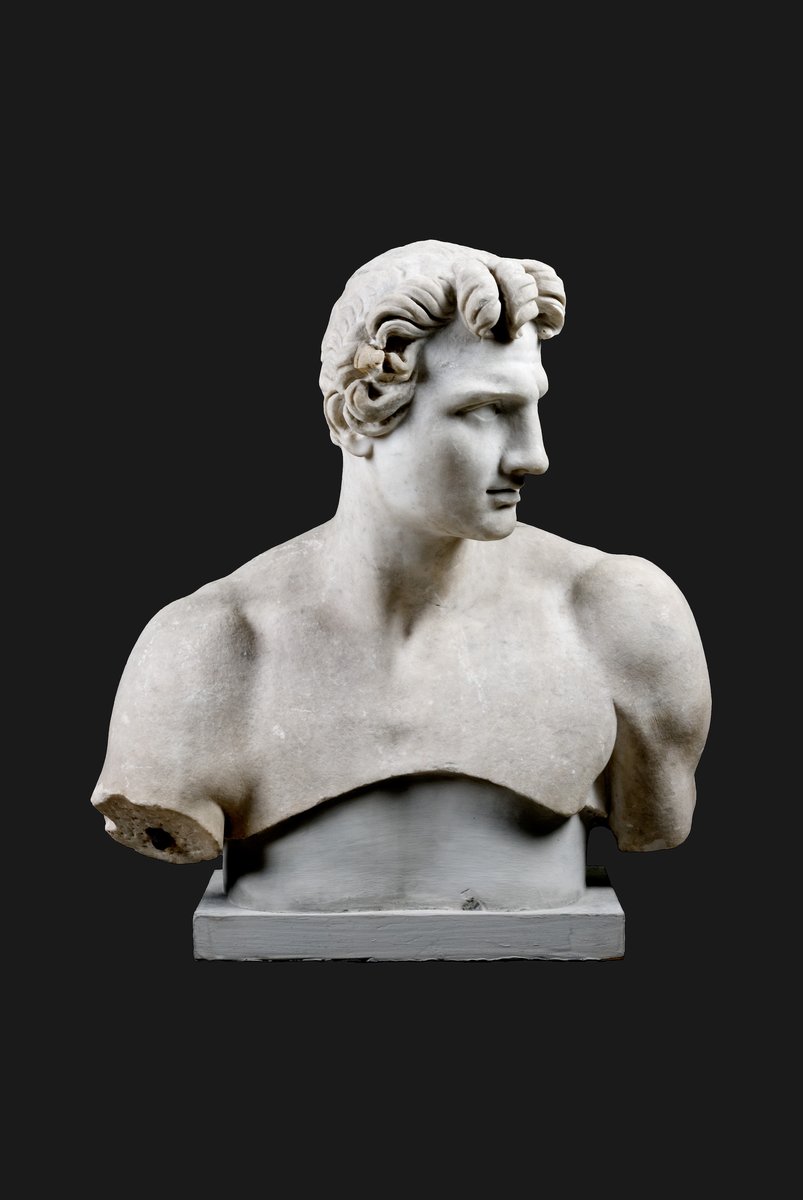
Bust of a Man
Sculptures
| Artist | |
|---|---|
| Culture | Italian |
| Date | ca. 1675 |
| Object type | sculpture |
| Medium, technique | bronze |
| Dimensions | 28 × 39 × 21 cm |
| Inventory number | 59.3 |
| Collection | Sculptures |
| On view | Museum of Fine Arts, Second Floor, European Sculpture 1350-1800, Gallery 2 |
The undiminished fame of the sculptor Giambologna during the sixteenth and seventeenth centuries was due mainly to the small bronzes made after his works. For generations, his pupils and followers kept the master’s models, from time to time casting them in bronze. Damiano Capelli was one of those who began his career in Giambologna’s former workshop in the third generation after the master’s death. Little is known of his life. Filippo Baldinucci, a biographer of Italian Baroque artists, records him as an able bronze caster. Before opening his own establishment Capelli worked under Ferdinando Tacca, who followed his father Pietro in Giambologna’s Borgo Pinti workshop. Only five signed works by Capelli have survived, all of them small bronzes finished to an extremely high standard; four depict hunting scenes (Alain Moatti Collection, Paris), and two of them are variants of the small bronzes in Budapest (see also inv. no. 59.4).
Certain details of Capelli’s hunting bronzes, such as the rearing and galloping horses, the boar and the stag, appear in a similar form in works by Giambologna, and later by Pietro and Ferdinando Tacca, and the idea of representing hunting scenes may have been stimulated by the hunts of which the Medici family and their circle were so fond. One of Capelli’s contemporaries, the draughtsman and etcher Stefano della Bella, was commissioned by the Medici to make a unique series of prints on this theme. Yet the small bronzes reflect not only the hunts, but also the animal fights similarly popular in Florence – an indispensable part of every important public spectacle there. In these events, frightened animals, which were usually far from aggressive, were set upon by horsemen armed with spears or swords, in an attempt to provoke them to fight. The men would sometimes don oriental-style costume to lend greater colour to these barbaric spectacles.
Text: © Miriam Szőcs
Balogh, Jolán, Katalog der ausländischen Bildwerke des Museums der bildenden Künste in Budapest, IV – XVIII. Jahrhundert: 1. Textband Bd. 1, Akadémiai Kiadó, Budapest, 1975, p. 180., no. 242.
Pope-Henessy, John, “Italian sculpture – Budapest and Paris”, Apollo 102.161-166 (1975), p. 474-475.
Szmodisné Eszláry, Éva, A Régi Szoborgyűjtemény kincsei, Szépművészeti Múzeum, Budapest, 1994, p. 61.
Szmodisné Eszláry, Éva, The treasures of the Old Sculpture collection, Szépművészeti Múzeum, Budapest, 1994, p. 61.
This record is subject to revision due to ongoing research.